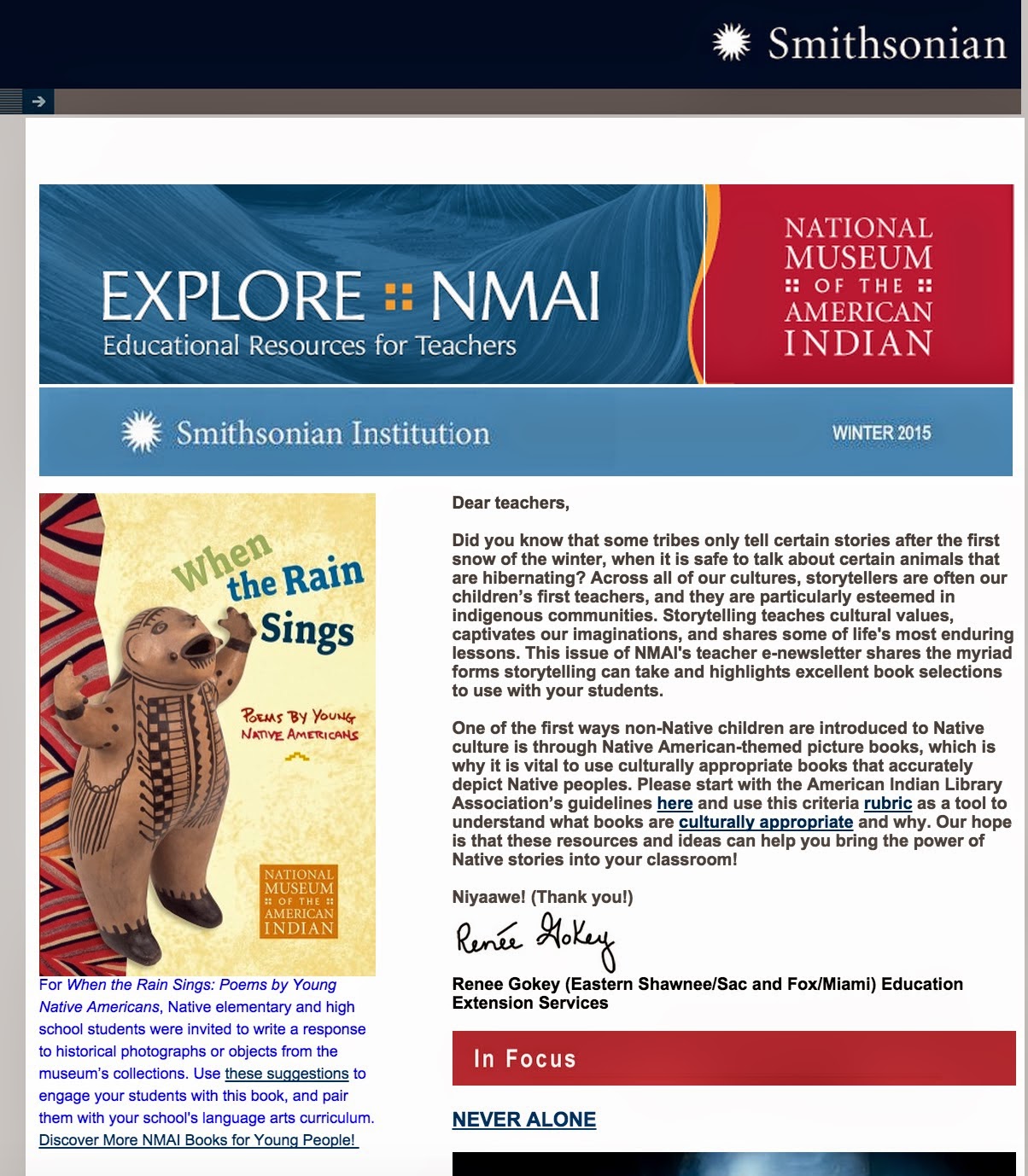
As noted yesterday, I'm in Tucson, visiting the American Indian Language Development Institute. Yesterday I was in Angie Hoffman's class on children's literature. Her class is outstanding. In discussion, students talked about how eye-opening Angie's class has been for them. One said she had read Meyer's TWILIGHT saga, and now after this class, is looking at Meyer's books with new eyes and insights. Students in the class work with Native children. Angie is White Mountain Apache, working on her dissertation at the University of Arizona.
In yesterday's class, students read aloud poetry. Some read poems they wrote. Marlon B. Evans (Akimel/Tohono O'odham) read a poem he wrote. After listening to him, I asked if he'd had any of his poems published. In fact, he has, and you can find them in two volumes of
Red Ink Magazine. He was featured in Volume 13, No. 2, and he has four poems in the most recent volume (Vol. 14, No 1, Spring 2008).
Red Ink is a student run publication at the University of Arizona, published by the American Indian Studies Program. Individual subscriptions to it are $25/year (two issues are published each year), and $35/year for an institutional subscription.
I think you'd be pleasantly surprised at what you find in
Red Ink. Graphic art, photography, poetry, short stories... By new poets and established writers, too, like Simon Ortiz and Laura Tohe.
Visit
Red Ink's website and place your subscription. If you appreciate Native literature, you'll love this magazine, and ought to consider using it in college lit classes. If you're a school teacher, the poems and stories are best suited for junior and senior English classes, while the graphics can be studied by 7th and 8th graders. The art on the front cover alone is worth the subscription cost. With this post is the cover of Vol. 13, #2. The art is by Ryan Redcorn. In both issues I mentioned above, you will find art by Bunky Echo-hawk. Regular readers of my blog know I especially like his work.
A special shout out here to Ashley Tsosie-Mahieu (Dine). Ashley is a graduate student at the University of Illinois. Her short story "Walk in Beauty" is published in Volume 13, #2.
Last, a warm thank you to Martha L. Dailey. Martha is Dine. I love her poem, "Reflections of Spider Woman." It reminds me of my grandmother. Here's the opening lines of that poem. It is a sample of what you'll find in
Red Ink. (If I can secure permission, I'll include the entire poem. Note---I got permission!)
Reflections of Spider Woman
Martha L. Dailey
After you died, we sifted through a footlocker
found under your bed. We sorted through
your belongings and uncovered
a hidden part of your past --
turquoise jewelry, a '65 T-Bird title,
and photo after photo of memories
frozen in exact dimensions.
Mom was given a squash blossom,
Aunt Dot took the silver bracelet,
Uncle Jesse wanted the concho belt.
Like land divided into plots,
each person was given something of value--
small parts to your greater whole.
I claimed a 3 x 3 photo
of you crouched, legs kneeling,
weaving a rug on a makeshift loom.
Your fingers bent strategically,
threading colored yarn in and out,
over and under, through and through.
A map full of lines running
wild across your hands,
connecting one point to another.
One deep line tells of a time
you pawned a saddle for food.
Another line holds the tears
from the pain you withstood
at the birthing of twelve kids--
one of which is my mom.
Was I a line? or just a dot?
Did I mean enough of something
to you to be placed in an archaic
structure of memories cut into your skin?
The Old Ones say don't speak of the dead.
Your name called aloud keeps your spirit here
and not to the place where you begin again.
Eight years after your death,
I still don't call to you.

















